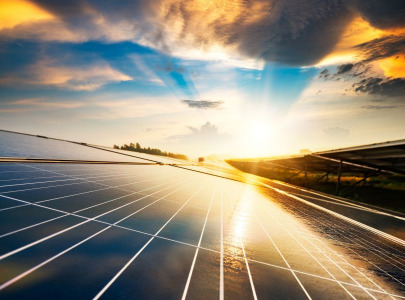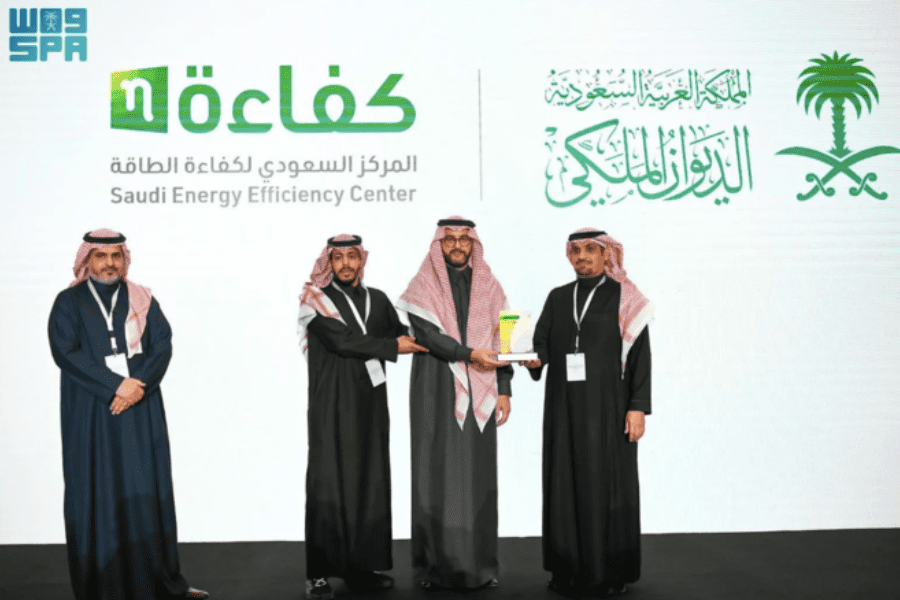Bright horizons: How solar power is shaping Saudi Arabia’s electricity future

The world hit a new record high for global carbon emissions last year. According to the International Energy Agency (IEA), CO2 emissions surged by 1.1% to hit 37.4 billion tonnes. The IEA also emphasized that without the substantial development in wind, nuclear, and solar power, energy-related emissions would have been three times larger.
This underscores a critical juncture: Now more than ever, the world needs to be fully committed to transitioning to cleaner energy and electricity sources. In this context, Saudi Arabia is positioning itself at the forefront of a transformative shift toward harnessing one of its most plentiful natural resources: solar energy.
Solar power fundamentals
Solar power is a potent source of electricity. In fact, the sunlight that the planet receives for one and a half hours is adequate to meet the world’s energy consumption — including electricity consumption — for a whole year.
But how does solar power work?
Currently, there are two main ways that the world harnesses solar power: photovoltaics (PV) and concentrating solar-thermal power (CSP). The former is generally used in solar panels, and it works by allowing the PV cells to absorb sunlight, which it will then use to create electrical charges. Meanwhile, the latter uses mirrors to reflect and concentrate sunlight onto receivers. These receivers convert solar energy into heat, which can be used immediately to generate electricity. The heat can also be stored for later use.
Tapping is virtually an inexhaustible natural resource. Apart from that, one of the benefits of solar power is that it’s cheaper.
IEA previously noted that “solar PV is a very modular technology that can be manufactured in large plants, which creates economies of scale but can also be deployed in very small quantities at a time. This allows for a wide range of applications, from small residential roof-top systems up to utility-scale power generation installations.”
“Despite increases in investment costs due to rising commodity prices, utility-scale solar PV is the least costly option for new electricity generation in a significant majority of countries worldwide,” the agency added.
Additionally, solar energy is capable of significantly cutting down emissions. Installing just 1.5 kW of solar capacity can prevent as much as 1,576 kilograms of carbon emissions annually. This is equivalent to planting 256 square meters of forests.
Saudi Arabia’s solar power potential
The geographic position of Saudi Arabia is ideal for harnessing solar energy. According to research, the country has an average daily solar radiation intensity of 6 kilowatt-hour per square meter (kWh/m2). In a year, 80 to 90% of days have clear skies. Its daily sunshine hours average at 8.53 hours.
A report from Mordor Intelligence underscores a sunny future for the desert nation’s solar energy market. According to the market intelligence firm, this market could hit 1,028 MW by the end of 2024. Furthermore, it could grow by 51 percent until 2029.
The report further reveals that the largest driver of growth during the forecast period will be the solar PV segment. Thanks to declining costs and its versatility (it can be used to generate electricity and heat water, among others), the segment could grow substantially.
This expansion is a welcome development for Saudi Arabia, which, through its ambitious Vision 2030, aims to develop over 40 gigawatts of solar PV capacity and 2.7 gigawatts of CSP capacity.
Expanding solar infrastructure
Meanwhile, 2022 data from Statista shows that several regions in Saudi Arabia showcased notable utilization of solar energy in household electricity consumption. Leading the way, the Qaseem region reported the highest usage, with households sourcing about 1.83% of their electricity from solar energy. Tabouk, Najra, and Makkah followed at 0.96%, 0.41%, and 0.32%, respectively. Sharing the fifth spot are Riyadh and Madinah, reporting solar energy usage at 0.31% of total household electricity.
These figures are only poised to increase as more solar power plants in Saudi are being constructed or have already begun providing electricity.
The 300 MW Sakaka Solar PV Park, located in Al Jouf, is the country’s first utility-scale renewable energy project. It was connected to the national grid by ACWA Power — a leading name in power generation and desalinated water production plants — in November 2019 and has since been a testament to the country’s strong commitment to clean energy and economic diversification. In fact, within its first year of operation, the solar project achieved a 100 percent local employment rate.
The facility is designed to produce enough energy to power 45,000 households in Al Jouf, which could offset more than 500 tonnes of carbon dioxide annually.
“ACWA Power is proud to contribute to the sustainable development efforts of the Kingdom through the deployment of the Sakaka PV project, which accelerated the pace of renewable energy utilization and bolstered the fulfillment of energy demand in KSA. In alignment with the goals of Vision 2030, Sakaka PV IPP has successfully contributed to the economic diversification, development of human capital, and the elevation of national competencies to ensure a better future for upcoming generations,” said ACWA Power Chairman Mohammad Abunayyan in a statement.
More solar power plants in Saudi
Earlier this year, the 1.5 GW Sudair Solar Park has also become fully operational. The electricity generated by the facility is being sold through a 25-year power purchase agreement (PPA) with the Saudi Power Procurement Company (SPPC) at a competitive rate of $0.012 per kWh.
The project, valued at $924 million, features advanced bi-facial panels equipped with tracking technology and automated robotic cleaning systems. For this solar park, ACWA Power and Water and Electricity Holding Company (Badeel) each has a 35% stake. Meanwhile, the remaining 30% is owned by the Saudi Aramco Power Company.
Previously in November, ACWA Power and Badeel have inked an agreement to build the world’s largest single-site solar power plant in Al Shuaibah, Mecca province.
This facility, expected to commence operations by the end of 2025, will have a staggering capacity of 2,060 MW. This project, along with others like the Sudair 1.5-GW solar facility, is supported by the Public Investment Fund (PIF), highlighting the government’s commitment to investing heavily in renewable energy as part of its economic diversification strategy.
In the same month, SPPC, a state-owned entity in Saudi Arabia tasked with purchasing electricity from independent power producers (IPPs), announced the qualification round for 3.7 GW of new solar projects. These projects, including the 2GW Al Sadawi and the 1GW Al Masa’a, are part of the fifth round of the National Renewable Energy Program. This initiative aims to meet 50% of the country’s electricity needs from renewable sources by 2030.
A new hope dawns
The world has previously agreed to limit global warming to a maximum of 1.5°C. For this to be achieved, emissions must be cut by 45% by 2030 and achieved net zero by 2050. Solar power plays a vital role.
According to the IEA, solar PV is among the three components currently “on track” to meet the ambitious Net Zero by 2050 Scenario — thanks to its impressive annual growth rate of 26% in 2022.
In the Middle East and North Africa (MENA), a region historically dominated by fossil fuels, hope is dawning. In its Renewables 2023 report, the IEA predicted that there will be a significant increase in renewable capacity, with an expected addition of 62 GW from 2023 to 2028. Remarkably, solar PV is anticipated to account for over 85% of this growth.
“More than one-third of the growth will be in Saudi Arabia alone,” remarked the agency.
Meanwhile, the Middle East Solar Industry Association (MESIA)’s 2024 Solar Outlook report supports this bright outlook. MESIA expects that the region will reach 40 GW of solar capacity this year alone and 180 GW by 2030.
With forecasts like this — supported by strong political will and an inherently solar power-friendly environment — the horizons are without a doubt shining brightly for Saudi Arabia.
Embark on a journey into the future of electricity at the Saudi Electricity Expo, a premier event gathering global leaders in technology and services.
Aligned with Vision 2030, this expo drives Saudi Arabia's power projects forward, attracting stakeholders from government authorities to investors.
Explore investment opportunities, network with industry leaders, and delve into key topics such as renewable energy and smart grids through exhibitions, seminars, and workshops. Join us in shaping the kingdom's sustainable development goals and diversifying its economy through innovation and collaboration in the electricity sector.
Energy & Utilities - Middle East and Africa Market Outlook Report 2024.
This must-have report for industry players offers a thorough understanding of the latest developments, challenges, and opportunities in the region, supported by data, analysis, and expert insights.









